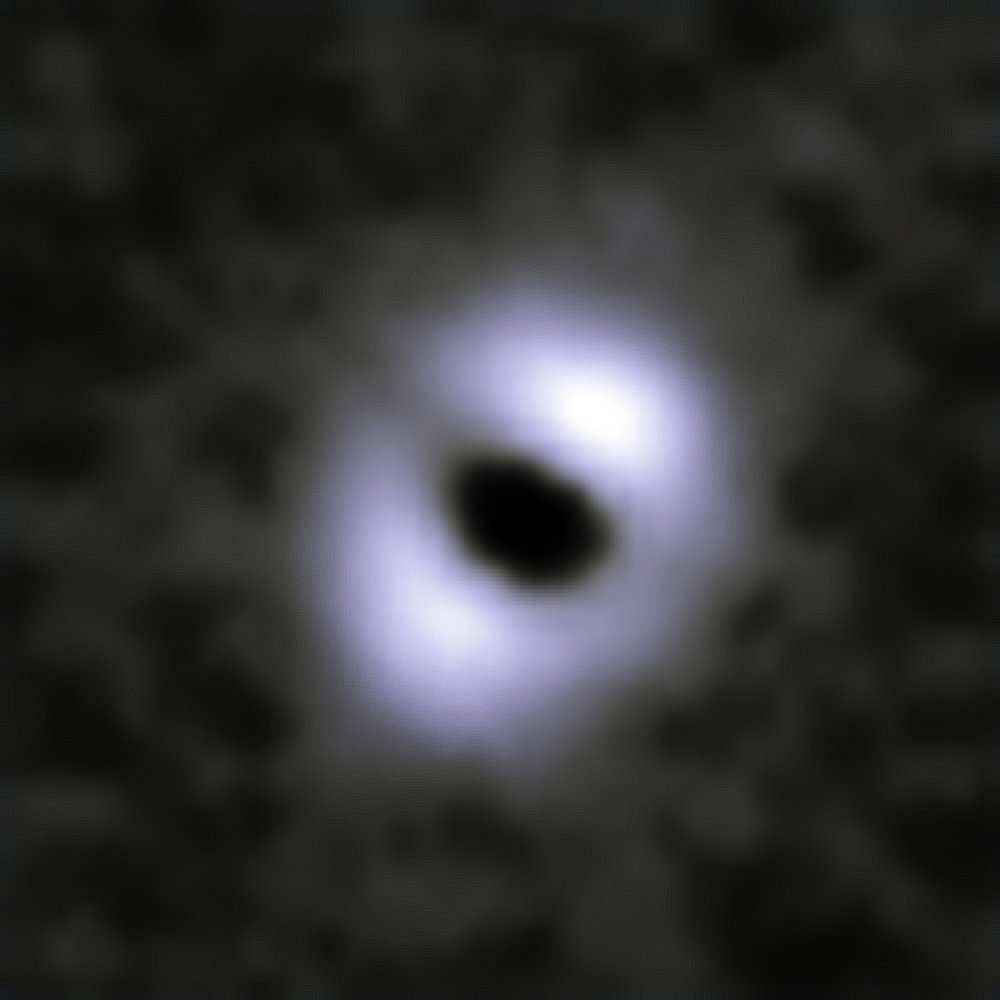| Basic Information | |
| What is this? | A dusty disc around the star kappa Coronae Borealis |
| Where is it in the sky? | In the constellation of Coronae Borealis |
| How big is it? | The debris disc stretches up to 200 times further from the star than the Earth is from the Sun |
| How far away is it? | The star is around 100 light years away |
| What do the colours represent? | Brighter regions show brighter dust |
Downloads
See this object in:
Planetary systems form out of discs of gas and dust. As the planets coalesce out of the maelstrom the dust and gas is cleared away, leaving a much calmer environment. In our Solar System, the lasting remnants of these early stages are the asteroid beld, between the orbits of Mars and Jupiter, the Kuiper Belt, out beyond Neptune, and the cloud of comets at the very outer reaches of our Solar System. But there is also a tenuous disc of dust in the Solar System, created by the collisions of asteroids and comets over billions of years.
The star κ Coronae Boralis, or “kappa Cor Bor”, which lies around 100 light years away, is around one and a half times the mass of our Sun. Although it is only 2.5 billion years old, it has already exhausted its supply of hydrogen and started to swell into the “subgiant” phase of its life, having inflated to around 5 times the Sun’s diameter. It is known to have at least one planet, orbiting the star at a distance of around 4 million km (around 2.5 times the distance of the Earth from the Sun).
The effect of a star’s aging on planets and asteroid belts is not well understood, but one way of studying it is to look for the discs of dust around stars. Herschel observations of the star have shown that there is a massive disc of dust around the star, stretching to about 30 billion km – 200 times the distance of the Earth from the Sun. The whole system is tilted at about 60 degrees relative to our point of view, which is why the disc appears elongated in the image. The black circle is due to the removal of light from the star itself, which would otherwise completely outshine the light from the disc.
The Herschel measurements can be used to estimate the properties and structure of the disc of material, and point towards there being a second large object orbiting the star. This second object could be another planet, which is either creating a sharp inner edge to the disc, or alternatively stirring up the material and creating a denser band in the middle. This dense band would be about twice the distance from the star as the Kuiper Belt is in our Solar System, and may well contain smaller objects similar to the dwarf planet Pluto.
A final possibility is that there are in fact two distinct bands of dust around the star, with the gap between them created and maintained by this postulated second object. If that is the case, then the observations from ground-based telescopes indicate that the object would have to be much more massive than Jupiter – it would have to be a brown dwarf, making the kappa Cor Bor a binary star system.
Although it is not yet possible to tell which of these scenarios is correct, the Herschel observations have shown that, at least in this case, dusty discs can survive the subgiant phase of an aging star’s life. What is now needed are more examples of similar stars to determine whether kappa Cor Bor is unusual or not. Although there are hints in the Herschel data, the analysis is still ongoing.

